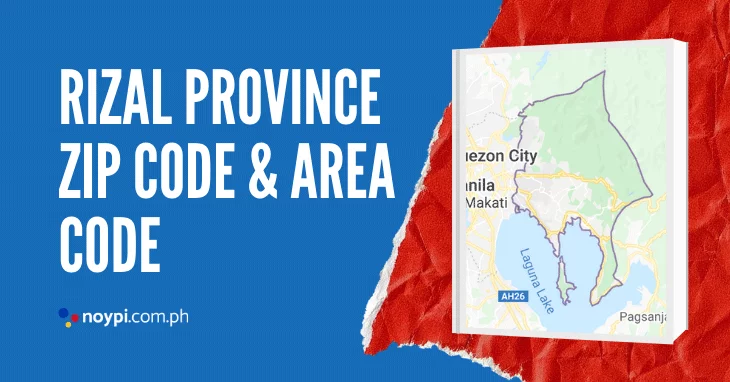| Location | Zip Code | Area Code |
|---|---|---|
| Angono | 1930 | 2 |
| Antipolo | 1870 | 2 |
| Bagong Nayon (Cogeo) | 1872 | 2 |
| Baras | 1970 | 2 |
| Binangonan | 1940 | 2 |
| Cainta | 1900 | 2 |
| Cardona | 1950 | 2 |
| Cupang | 1873 | 2 |
| Jalajala | 1990 | 2 |
| Langhaya | 1874 | 2 |
| Mambagat | 1875 | 2 |
| Mayamot | 1871 | 2 |
| Morong | 1960 | 2 |
| Pililla | 1910 | 2 |
| Rodriguez (Montalban) | 1860 | 2 |
| San Mateo | 1850 | 2 |
| Tanay | 1980 | 2 |
| Taytay | 1920 | 2 |
| Teresa | 1880 | 2 |
About Rizal Province
Once called Marong, this province used to be part of Manila and separated when the Philippine Commission issued Act No. 137. In 1901, the province’s name was changed into “Rizal,” in honor of Jose P. Rizal.
From this province are distinguished artists Carlos Francisco and Lucio San Pedro.
Travelers come for the Higantes Festival in Angono, wherein colorful giants are dressed like fishers and other characters. The Mediterranean-inspired Pinto Art Museum features many forms of art, from that on a canvas to sculptures. The Angono Petroglyphs can be found in a museum of Rizal.
Official website: rizalprovince.ph
